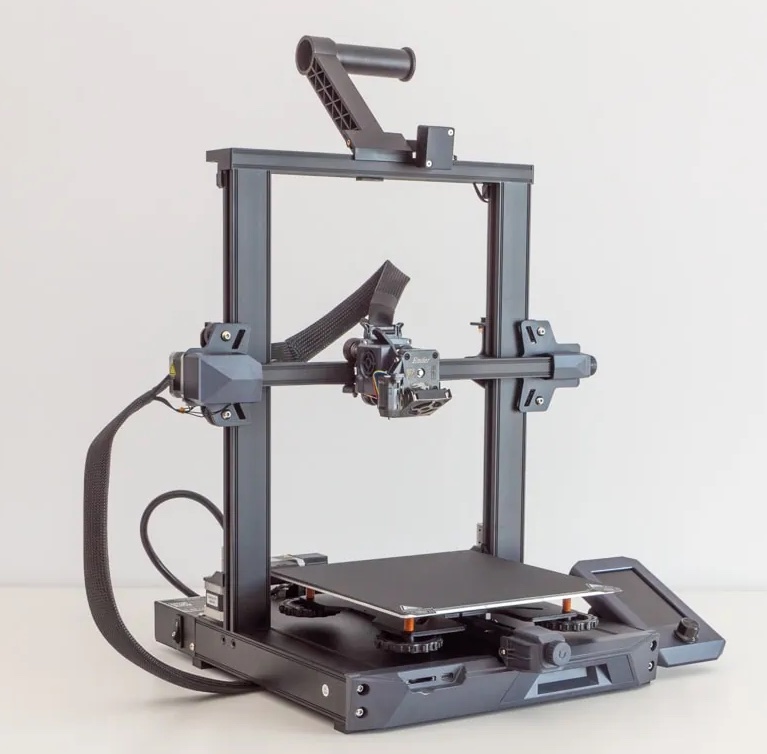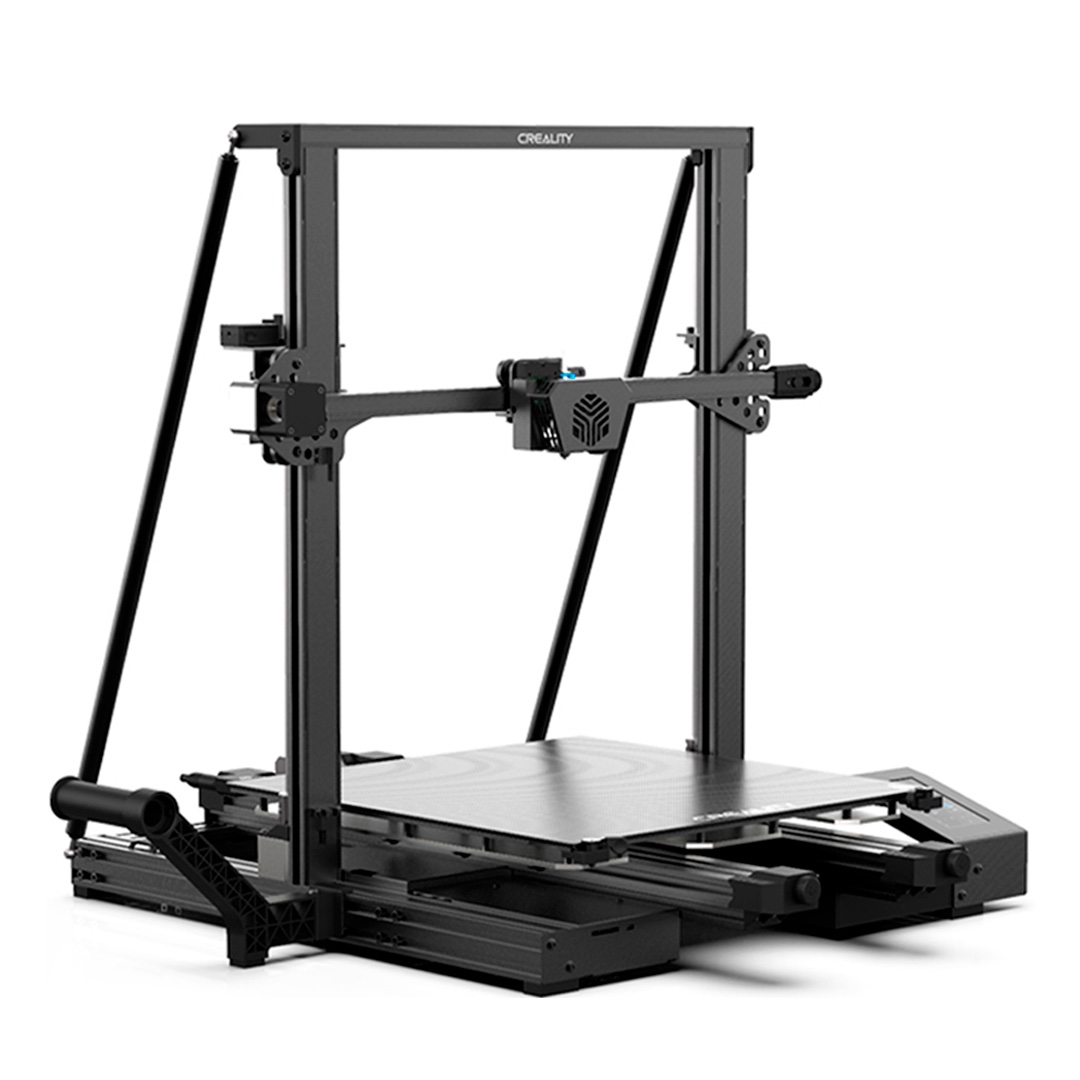Compare Ender 3 S1 Plus vs CR 6 Max
Comparison between the best 3D printers
Choose the best 3D printer at the best price. The cheapest 3D printers are here.
Buy a 3D printer here with 3D Fila.
 |
 |
|
| Model | Ender 3 S1 Plus[BUY Ender 3 S1 Plus] |
CR 6 Max |
| Printing Material | Filament | Filament |
| Buy Filament for Creality 3D Ender 3 S1 Plus | Buy Filament forCreality 3D CR 6 Max | |
| Estimated price | $549,00 | $700,00 |
| Manufacturer | Creality 3D | Creality 3D |
| Release Year | 2022 | 2021 |
| Print Volume [mm] | 300x300x300 | 400x400x400 |
| Printer Size [mm] | 557x535x655 | 725x640x691 |
| Weight [kg] | 10,25 | 14 |
| Power Loss Recovery | YES | YES |
| Enclosed printer | NO | NO |
| Bed Leveling | Automatic | Automatic |
| Filament End Sensor | YES | YES |
| Bed type | Heated | Heated |
| Power supply system | Direct Drive | Bowden |
| Standard nozzle | 0,4 | 0,4 |
| Maximum Nozzle Temperature [°C] | 260 | 260 |
| Maximum Bed Temperature [°C] | 100 | 90 |
| Maximum printing speed [mm/s] | 150 | 100 |
| Filament holder | YES | YES |
| Camera for supervision | NO | NO |
| Recommended filaments | PLA, PETG, Tritan, Flex, ABS | PLA, PETG |
| Recommended slicers | Cura, Simplify, Slic3r, IdeaMaker | Cura, Simplify, Slic3r, IdeaMaker |
| Maximum Resolution [mm] | 0,1 | 0,1 |
| Processor | ||
| Display | Display touchscreen 4,3'' | Display touchscreen 4,3'' |
| Power Supply | 110/220V / 350W | 110/220V / 500W |
| Connectivity | SD / USB | SD / USB |
| Operating systems | Windows, Mac, Linux | Windows, Mac, Linux |
| Date of registration in the system | 2022-11-04 | 2022-11-04 |
| Release date | 2022 | 2021 |
| Extra features | The Ender 3 S1 Plus 3D Printer offers quality prints with a build volume of 300x300x300 mm. It stands out for its "Sprite" extruder, automatic bed leveling and easy-to-use touchscreen. It has excellent safety features and simple assembly. In addition, it features temperature uniformity in the heated bed, suitable for various materials. | Crealitys CR-6 Max printer offers a large 400 x 400 x 400mm build area, perfect for larger projects without dividers. Its auto-leveling system and force sensor simplify setup. It has a 4.3-inch touchscreen and convenient features like a tool drawer and filament holder. Plus, its modular hotend, redesigned extruder, and silicon carbide-coated build plate improve print quality. |
| Support for multiple colors and materials (AMS and CFS) | NO | NO |
Notes * |
||
| Cost-benefit | 6 / 10 | 6 / 10 |
| Hardware | 2.4 / 10 | 2 / 10 |
| Tela | . | . |
| Print volume | 4 / 10 | 4 / 10 |
| Performance | 1 / 10 | 1 / 10 |
| [BUY Ender 3 S1 Plus] |
Conclusion |
| In comparing the Ender 3 S1 Plus and CR-6 Max, both printers demonstrate solid features suited for various 3D printing needs, but they cater to different priorities and budgets. The Ender 3 S1 Plus offers a balance of performance and cost, making it an attractive option for hobbyists and small projects. With a print volume of 300x300x300 mm, it supports a range of materials and provides easy operation through its touchscreen interface. Its automatic bed leveling and safety features contribute to a straightforward printing experience. The Ender 3 S1 Plus stands out for its efficiency at a lower price point, appealing to consumers looking for quality without a hefty investment. In contrast, the CR-6 Max is designed for users who require a larger build area, measuring 400x400x400 mm. This size is advantageous for larger projects but comes with a higher price tag. While offering similar features such as automatic bed leveling and compatibility with multiple slicers, it falls slightly behind on speed and overall performance metrics compared to the Ender 3 S1 Plus. Additionally, its enhanced features, like the modular hotend and improved build plate, seek to elevate print quality. Ultimately, if budget and ease of use are primary concerns, the Ender 3 S1 Plus presents a compelling choice. However, for those needing the capacity to handle larger prints and who are willing to pay a bit more, the CR-6 Max could be a better fit. In conclusion, the selection between these two models should be determined by the user's specific 3D printing needs and preferences, balancing print volume, performance, and cost-effectiveness. |

